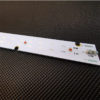Led Technology
The Light Cartel of the Last Century and the Current LED Pricing Wars
The Light Cartel of the Last Century and the Current LED Pricing Wars: A Comparative Study on Quality and Competition.
Introduction The light bulb industry has undergone significant transformations over the past century. In the early 1900s, the Phoebus cartel, a group of leading light bulb manufacturers, conspired to control the market, manipulate pricing, and limit the lifespan of incandescent bulbs to boost sales. Fast forward to the present day, and we see a new era of competition in the LED bulb market, with manufacturers racing to offer the lowest prices, often at the cost of quality.
This article delves into the history of the Phoebus cartel and compares it to the current state of the LED bulb market, examining the effects of aggressive pricing and quality issues.
The Phoebus Cartel: A Brief History The Phoebus cartel was formed in 1924 by major global light bulb manufacturers, including General Electric, Philips, and Osram. The goal of the cartel was to control the global light bulb market by setting standard prices, limiting competition, and reducing the lifespan of incandescent bulbs. The cartel members agreed to limit the lifespan of their bulbs to 1,000 hours to increase replacement frequency and boost sales. This practice, known as planned obsolescence, ultimately deprived consumers of long-lasting, energy-efficient light bulbs for decades.
The LED Bulb Market: Price Wars and Quality Concerns In the 21st century, the light bulb market shifted towards LED technology, offering energy efficiency, longer lifespans, and environmental benefits. However, the LED bulb market has become increasingly competitive as manufacturers race to offer lower prices to attract consumers. This intense price competition has led to a decline in quality, with many low-priced LED bulbs suffering from flickering, inconsistent color temperature, and shorter lifespans than advertised. Moreover, as manufacturers cut corners to reduce costs, some LED bulbs are not as energy-efficient as they claim to be, undermining one of the main selling points of LED technology. This race to the bottom on price has created a market flooded with subpar products, leaving consumers with limited options for reliable, high-quality LED bulbs.
Comparison: The Light Cartel vs. LED Pricing Wars While the Phoebus cartel and the current LED pricing wars are different in nature, they share similarities in their negative impact on consumers. The Phoebus cartel manipulated the market to maximise profits by limiting competition and artificially reducing product lifespan. In contrast, the LED pricing wars stem from fierce competition and manufacturers’ attempts to undercut one another on price. Both situations have led to a decline in product quality and value for consumers. In the case of the Phoebus cartel, the artificial lifespan limitation resulted in a waste of resources and increased energy consumption. With the LED pricing wars, the race to the bottom on price has compromised product quality and energy efficiency, negating the potential benefits of LED technology.
The Real Cost of Manufacturing and the Elusive Promise of Long-lasting LED Bulbs One of the most critical factors in the LED pricing wars is the question of whether there is a price threshold below which it is no longer economically viable for manufacturers to produce high-quality LED bulbs. As prices continue to drop, manufacturers face increasing pressure to reduce costs, which can ultimately compromise product quality and durability. Many experts argue that there is a limit to how low the cost of LED bulbs can go without sacrificing the promised advantages of this technology. As manufacturers cut corners to reduce production costs, they risk undermining the energy efficiency and long lifespan that have made LED bulbs so attractive to consumers. In the early years of LED technology, manufacturers touted the 50,000-hour lifespan of their bulbs as a significant selling point. However, as the market has evolved, consumer priorities have shifted. With the availability of low-cost LED bulbs, many consumers have become less concerned with the long lifespan of their bulbs and more focused on the immediate savings offered by low-priced alternatives. This shift in consumer priorities may have contributed to the decline in the overall quality of LED bulbs. By prioritising low prices over long-lasting and energy-efficient products, consumers may be inadvertently encouraging manufacturers to produce lower-quality bulbs that fail to deliver on the initial promises of LED technology.
LED Bulbs vs. Conventional Bulbs in the Context of The Centennial Light The Centennial Light, a carbon filament incandescent light bulb that has been burning continuously since 1901, serves as a fascinating point of comparison when examining the longevity of LED bulbs versus conventional bulbs. This extraordinary light bulb, located at the Livermore-Pleasanton Fire Department in California, has outlasted generations of conventional bulbs, defying the odds and providing an interesting case study on bulb durability. The Centennial Light’s longevity is often attributed to its low wattage and continuous operation, which has minimised the stress on the filament caused by frequent on-off cycles. However, it is also worth noting that the bulb predates the formation of the Phoebus cartel, which actively sought to reduce the lifespan of incandescent bulbs to increase sales. The Centennial Light serves as a reminder of the potential durability of conventional bulbs, had the market not been manipulated by the cartel.
In the context of LED bulbs, the Centennial Light demonstrates the importance of prioritising longevity and durability in lighting technology. While LED bulbs have been marketed with the promise of a 50,000-hour lifespan, the race to the bottom on price has led to a decline in overall quality, making it less likely that these bulbs will achieve their full potential in terms of durability. To truly maximise the benefits of LED technology, both consumers and manufacturers must recognise the value of long-lasting, energy-efficient bulbs. Consumers should be willing to invest in higher-quality LED bulbs that deliver on their energy-saving promises and provide an extended lifespan. Manufacturers, on the other hand, must focus on producing bulbs that balance affordability with quality, ensuring that their products fulfil the promise of LED technology.
The Centennial Light serves as a powerful example of what can be achieved when durability is prioritised in lighting technology. By learning from this historic bulb and focusing on the long-term benefits of LED bulbs, both consumers and manufacturers can help create a more sustainable and energy-efficient future.

















